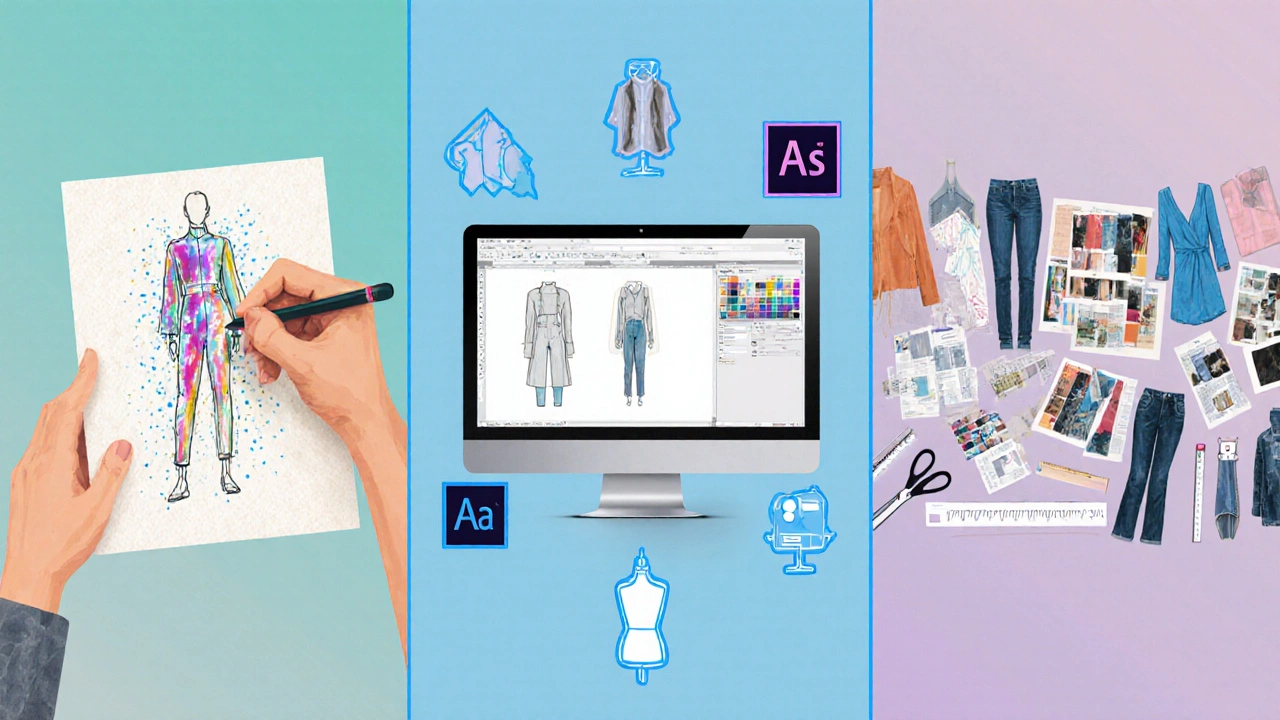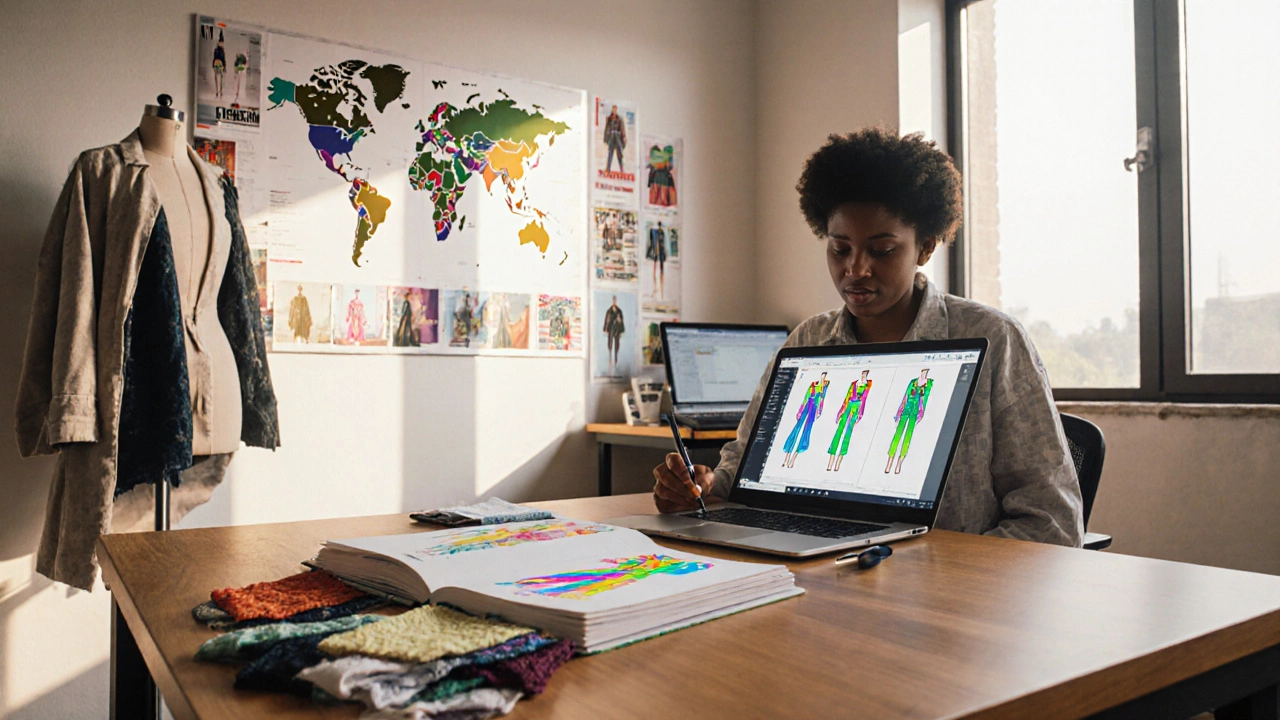Fashion Design Qualification Calculator
Select your career goal to discover the most suitable education path for your fashion design journey.
Choose Your Career Path
Recommended Education Path
Duration:
Key Skills Required
Portfolio Requirements
When you ask yourself "What qualifications do I need for fashion design?", the answer isn’t a one‑size‑fits‑all list. The field blends art, technology, business, and culture, so the right mix of schooling, skills, and experience depends on where you want to land - from runway houses to tech‑driven apparel startups.
What is Fashion Design?
Fashion Design is a creative discipline that turns ideas into wearable clothing and accessories. It covers everything from sketching silhouettes to selecting fabrics, fitting prototypes, and forecasting trends. A Fashion Designer uses artistic vision, technical know‑how, and market insight to bring collections to life.
Formal Education Paths
Most aspiring designers start with a structured program. Below is a quick snapshot of the three most common routes.
| Qualification | Typical Duration | Typical Cost (USD) | Entry Requirements | Career Outcomes |
|---|---|---|---|---|
| Associate Degree in Fashion Design | 2 years | $8,000‑$20,000 | High school diploma, portfolio basics | Assistant designer, pattern maker |
| Bachelor of Fashion Design | 4 years | $25,000‑$60,000 | Strong portfolio, SAT/ACT (if required), interview | Lead designer, collection manager |
| Certificate / Short‑Course | 3‑12 months | $1,500‑$5,000 | Basic sketching skills, motivation | Freelance illustrator, technical drafter |
Choosing between an associate, bachelor, or certificate hinges on your career timeline and budget. If you aim for top‑tier fashion houses, a bachelor’s degree is often the industry standard. For fast‑track roles like technical designer or pattern maker, an associate degree or focused certification can be enough.
Core Skills Every Designer Must Master
- Technical Drawing & Illustration - Ability to render flat sketches and draped figures with clarity.
- Textile Knowledge - Understanding fabric construction, drape, and performance.
- Computer‑Aided Design (CAD) - Proficiency in software such as Adobe Illustrator, CLO 3D, or Optitex.
- Trend Forecasting - Reading market reports, runway shows, and cultural cues.
- Production Basics - Pattern making, grading, and garment construction workflows.
- Business Acumen - Pricing, brand positioning, and supply‑chain basics.
These skills are usually embedded within the curriculum, but you can also supplement them with online tutorials, workshops, and self‑practice.

Building a Killer Portfolio
The portfolio is the passport to any design interview. It should demonstrate a clear design voice, technical competence, and versatility.
- Start with 8‑12 high‑quality images that show a range of styles.
- Include hand‑drawn sketches, CAD flats, and photos of actual garments.
- Explain each piece briefly: concept, materials, and production method.
- Keep the layout clean - white background, consistent fonts, and logical sequencing.
- Update it every 6‑12 months to reflect your latest work.
When you first mention the portfolio, add microdata markup:
Portfolio acts as a visual résumé that showcases your design thinking, technical skill set, and personal aesthetic.
Gaining Real‑World Experience
Classroom knowledge sets the foundation, but industry exposure solidifies it.
- Internships - Most fashion schools require at least one semester in a design studio or production house. Internships let you apply classroom concepts to real projects and build networking contacts.
- Freelance Projects - Offer to design collections for local boutiques or emerging brands.
- Fashion Shows & Competitions - Participating in events like Designers of Tomorrow adds credibility and media exposure.
- Apprenticeships - Working under an established designer for 6‑12 months can fast‑track skill acquisition.
Microdata for the first mention of Internship appears above.
Common Misconceptions and Pitfalls
Many think you only need raw talent, but the industry values measurable competence.
- Misconception: "A great sketch is enough." Reality: Studios demand technical drawings, fabric specs, and cost estimates.
- Misconception: "You can skip formal education." Reality: Even self‑taught designers often pursue a certificate to earn credibility.
- Misconception: "Fashion is all about glamour." Reality: Behind every runway piece are long hours of pattern making, fittings, and supply‑chain coordination.
Stay realistic about time and financial commitments. A typical bachelor’s path takes 4 years and can cost up to $60k, but scholarships, assistantships, and part‑time work can offset the expense.
Roadmap Checklist for Aspiring Designers
- Complete high school with strong art or art‑history grades.
- Build an initial sketchbook - aim for 30-50 pieces.
- Research accredited fashion programs - consider location, faculty, and industry ties.
- Prepare a portfolio tailored to each school’s guidelines.
- Apply to at least three programs; include recommendation letters.
- Enroll in a chosen program and focus on core courses: illustration, textiles, CAD.
- Secure a summer internship in a design studio or production house.
- Continuously update your portfolio with school projects and internship work.
- Attend fashion weeks, trade shows, and networking events.
- After graduation, target entry‑level roles - assistant designer, technical designer, or pattern maker.
Follow this checklist and you’ll have concrete evidence of the fashion design qualifications recruiters look for.
Do I need a bachelor’s degree to become a fashion designer?
A bachelor’s degree is the most common pathway and often required by major fashion houses, but talented designers can also break in with an associate degree, a strong portfolio, or relevant industry experience.
What should I include in my fashion design portfolio?
Showcase 8‑12 projects that blend hand sketches, digital flats, fabric swatches, and photos of finished garments. Explain each piece’s concept, material choices, and production process.
Are fashion design certificates worth it?
Certificates are great for specific skill gaps-like CAD software or textile technology-but they usually complement, not replace, a broader degree if you aim for senior design roles.
How long does it typically take to land a designer job after graduation?
Most graduates secure entry‑level positions within 3‑6 months, especially if they’ve completed an internship and have a polished portfolio.
What are the most important software tools for fashion designers?
Adobe Illustrator for flat sketches, CLO 3D or Marvelous Designer for virtual garment simulation, and Photoshop for mood boards are industry staples.
